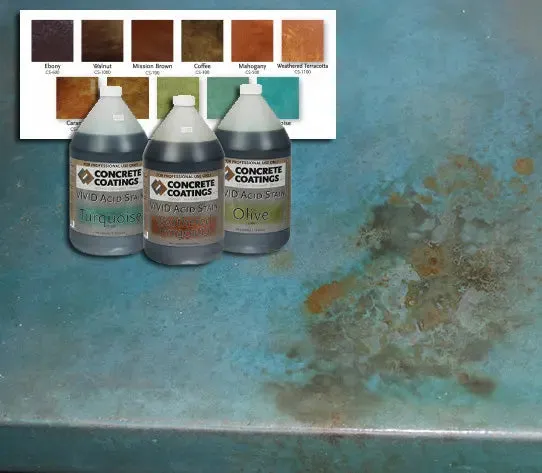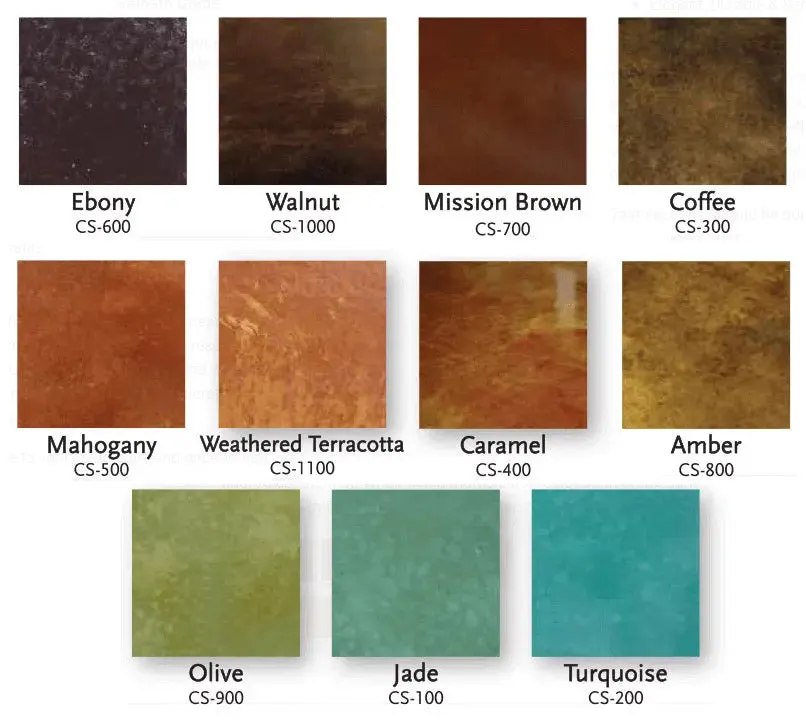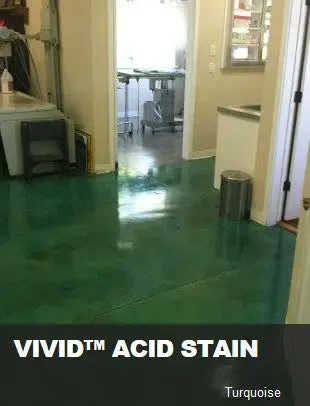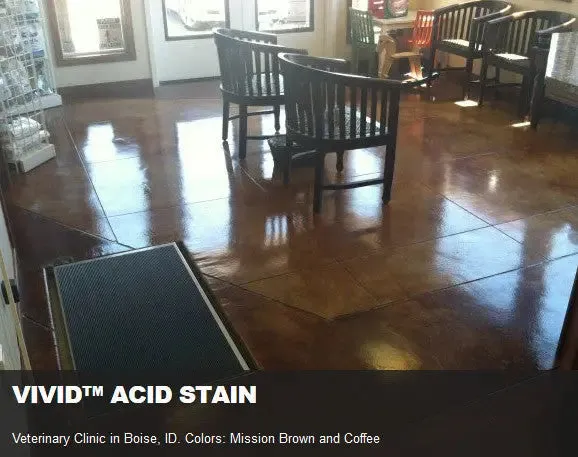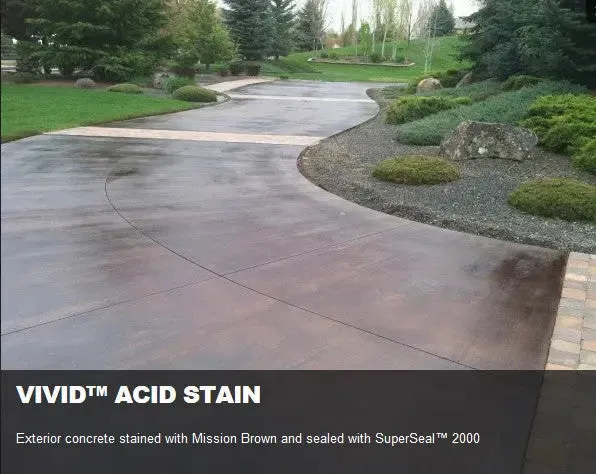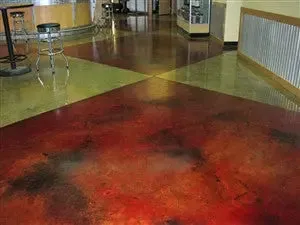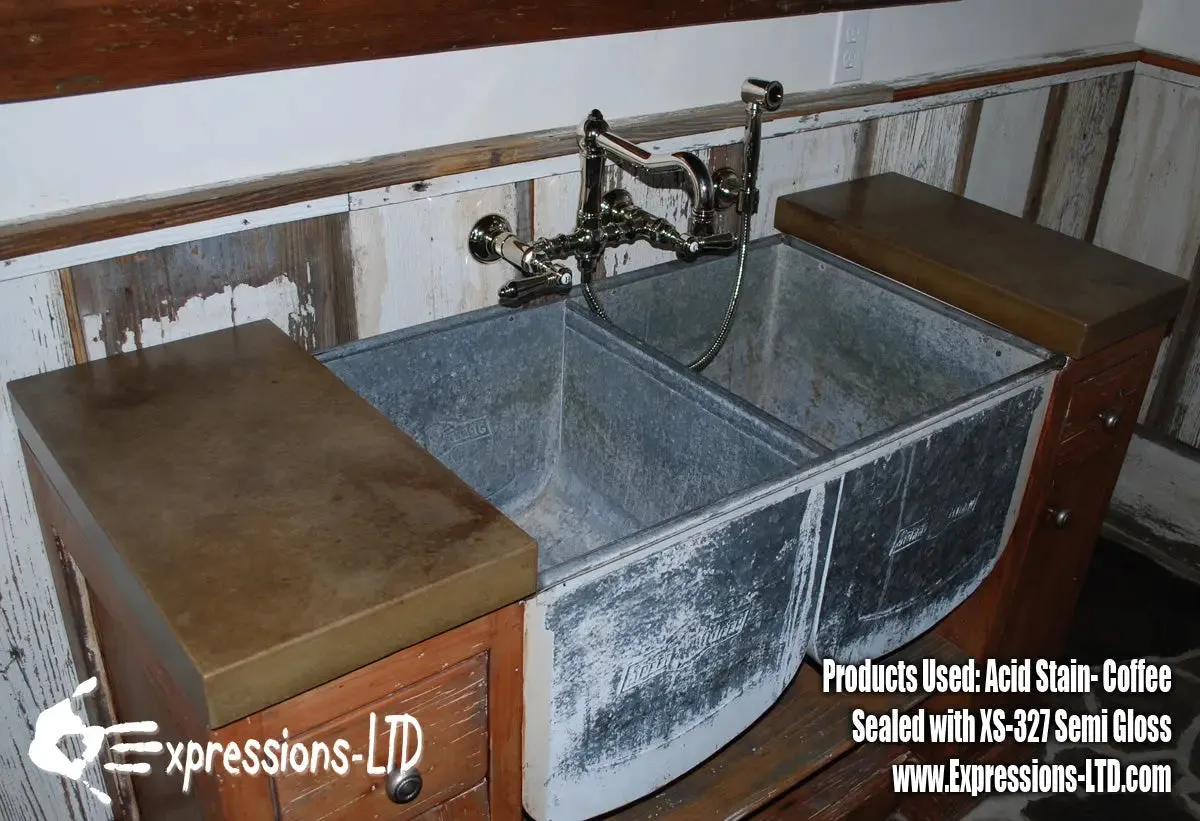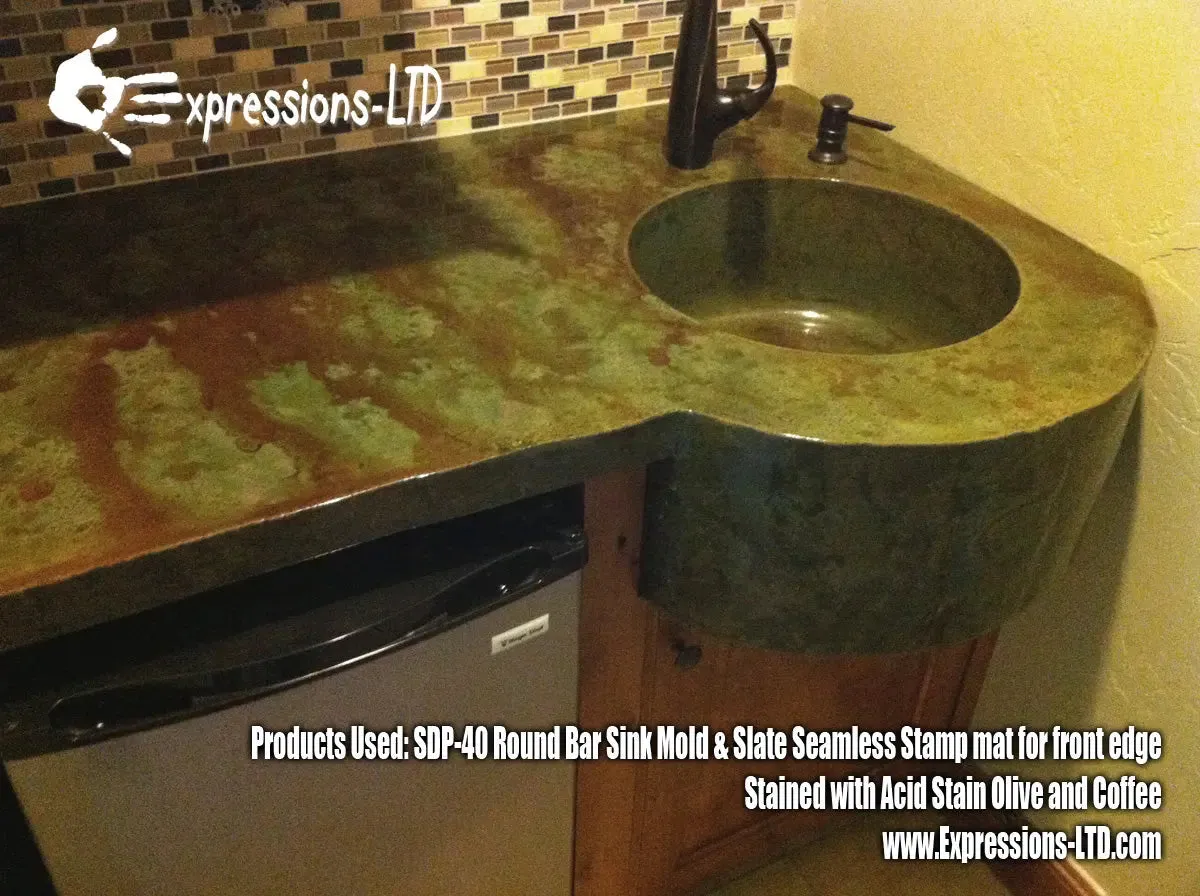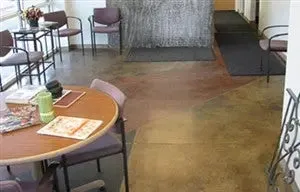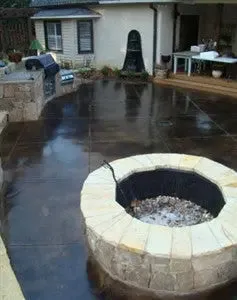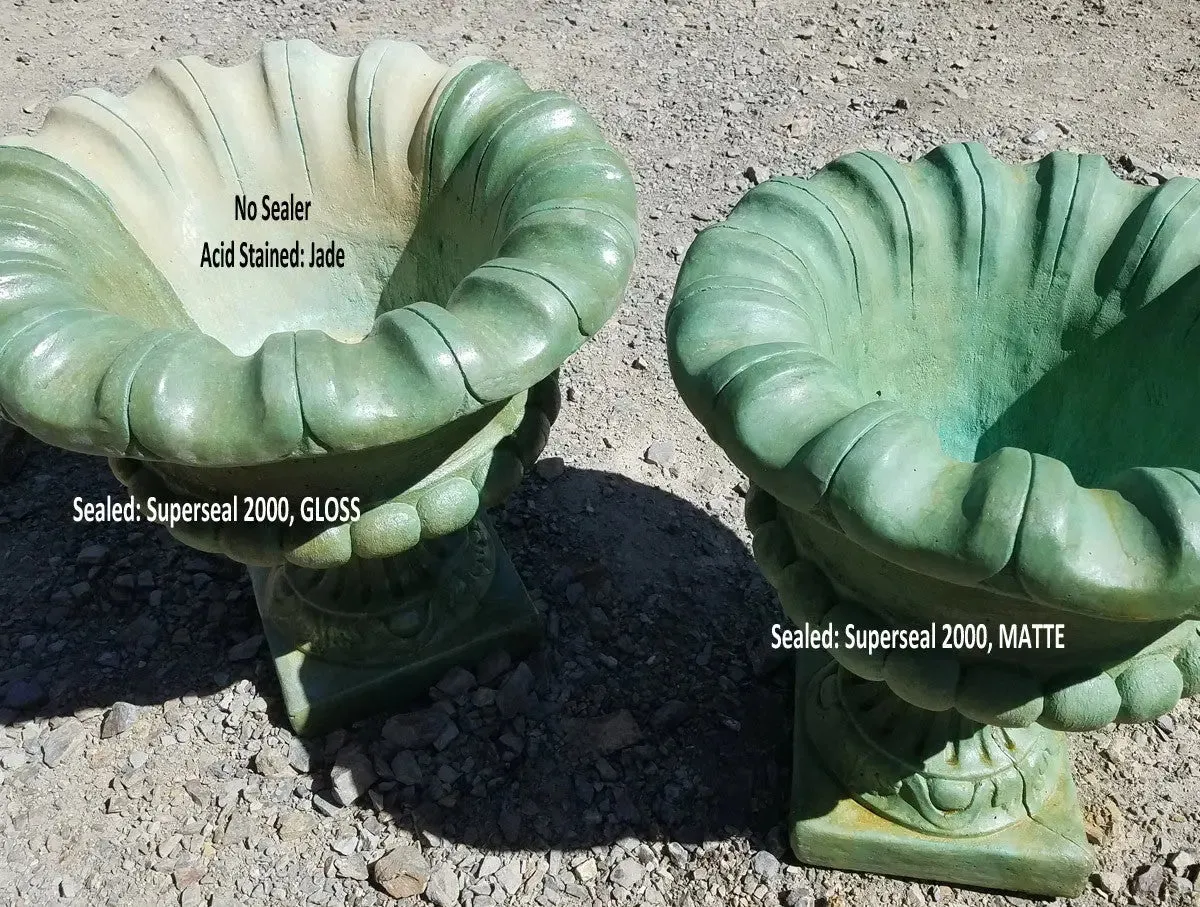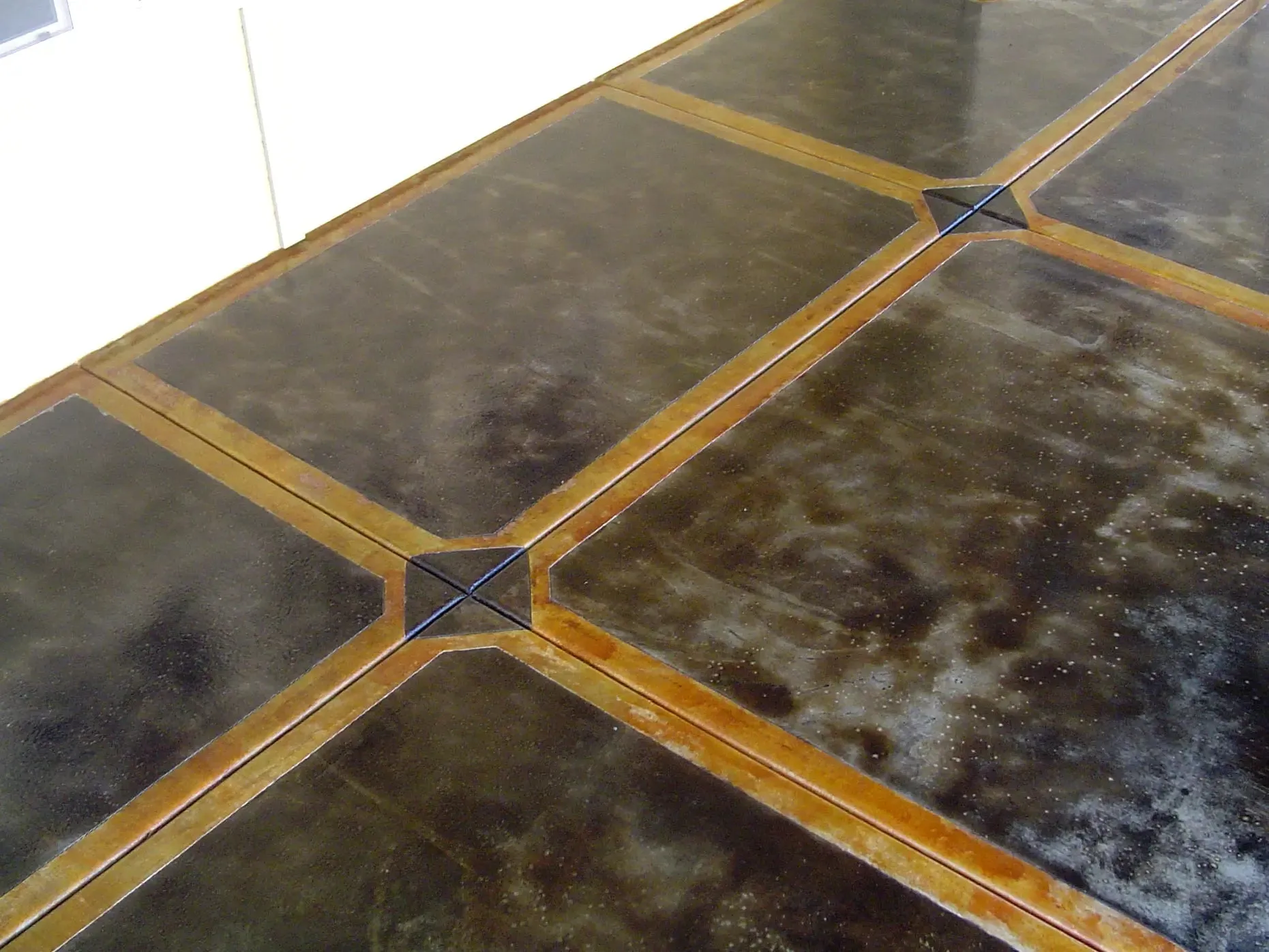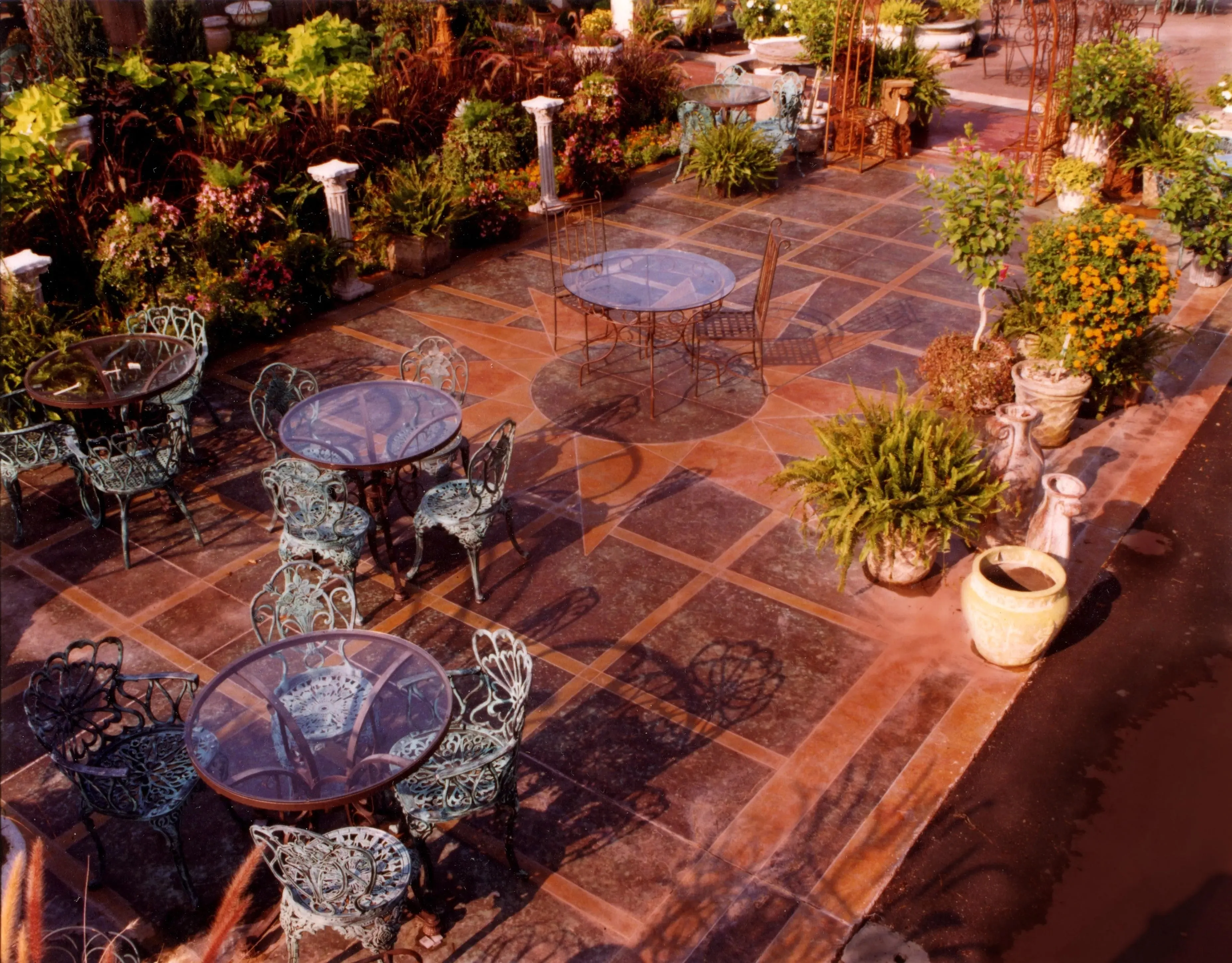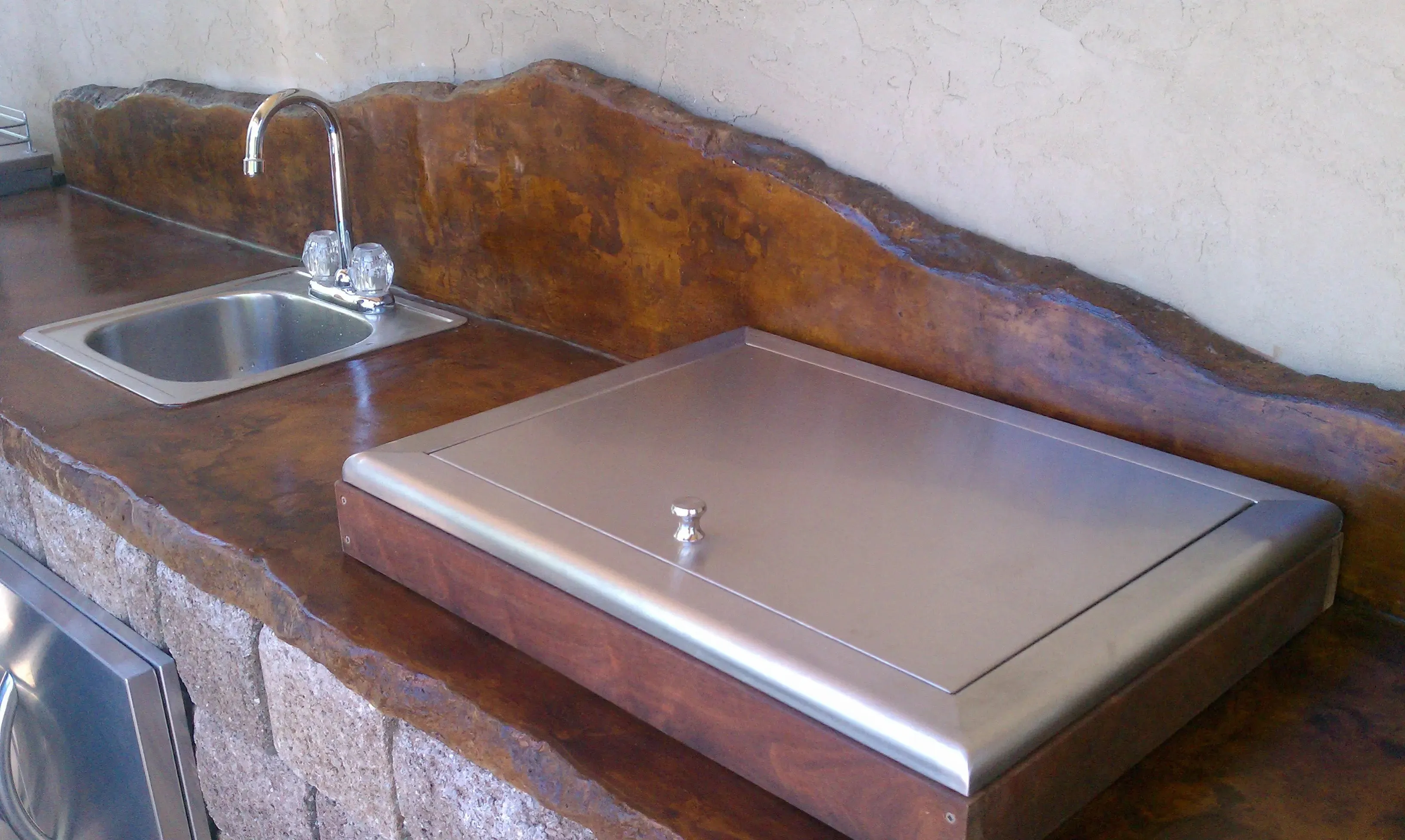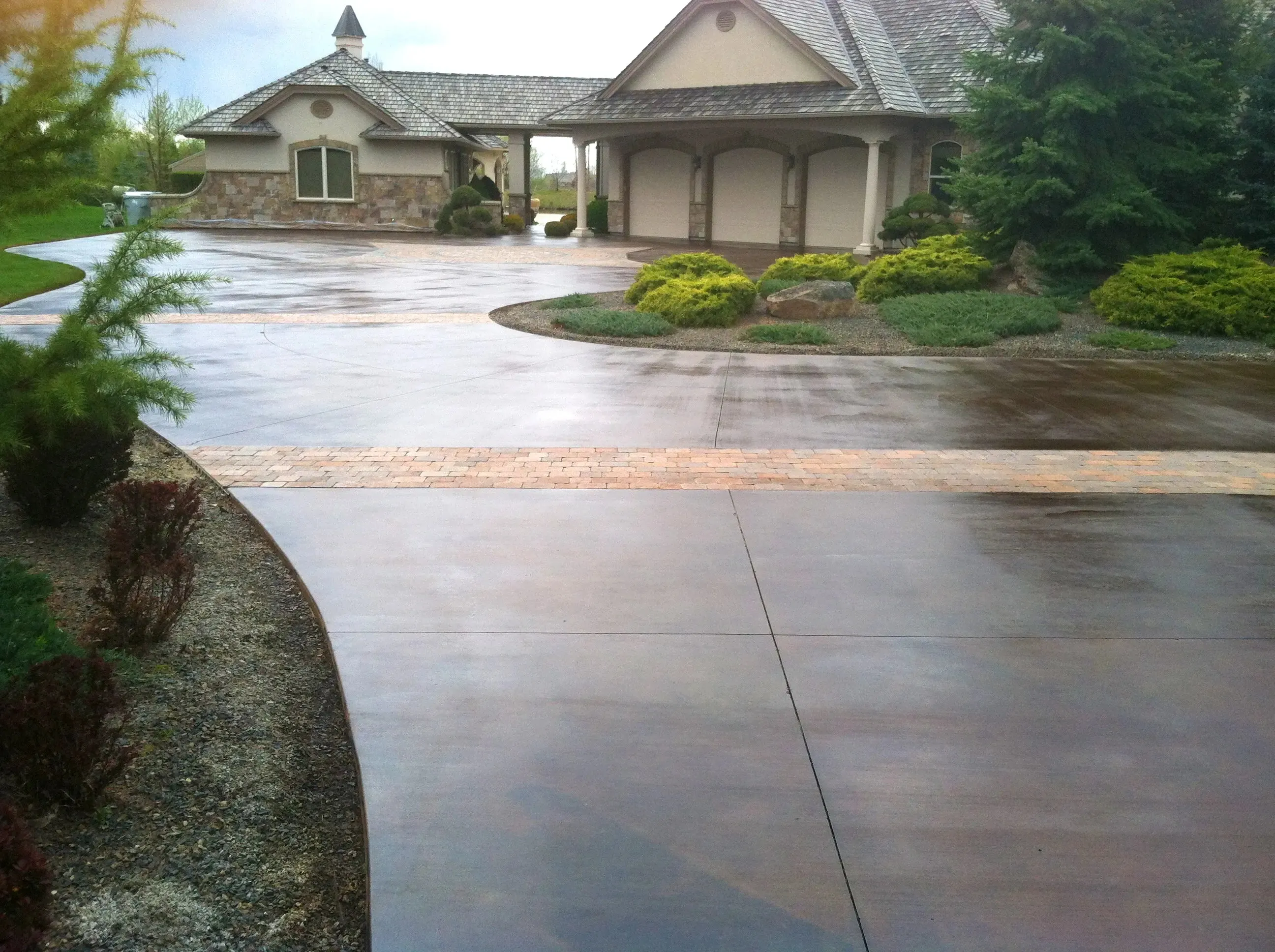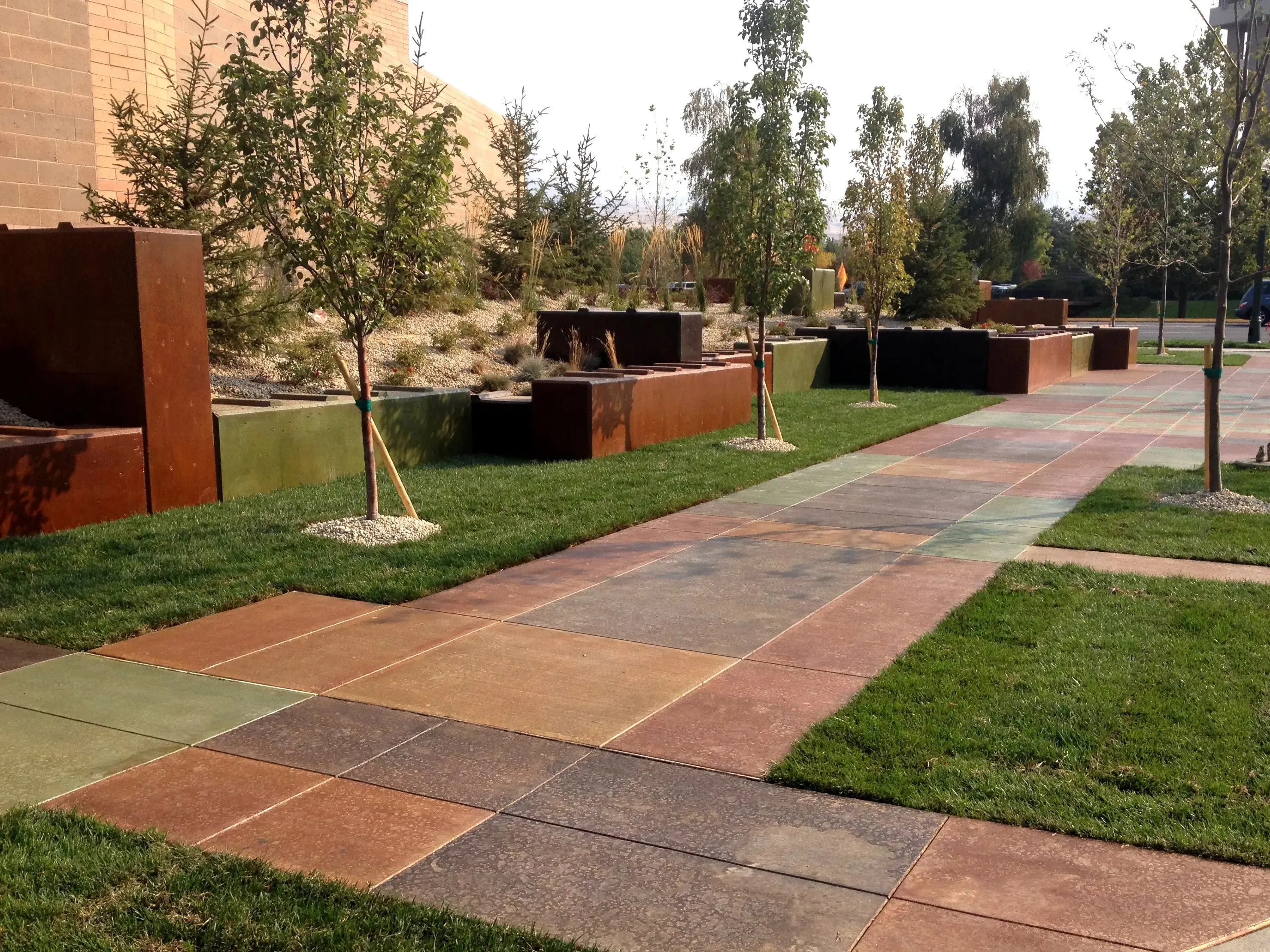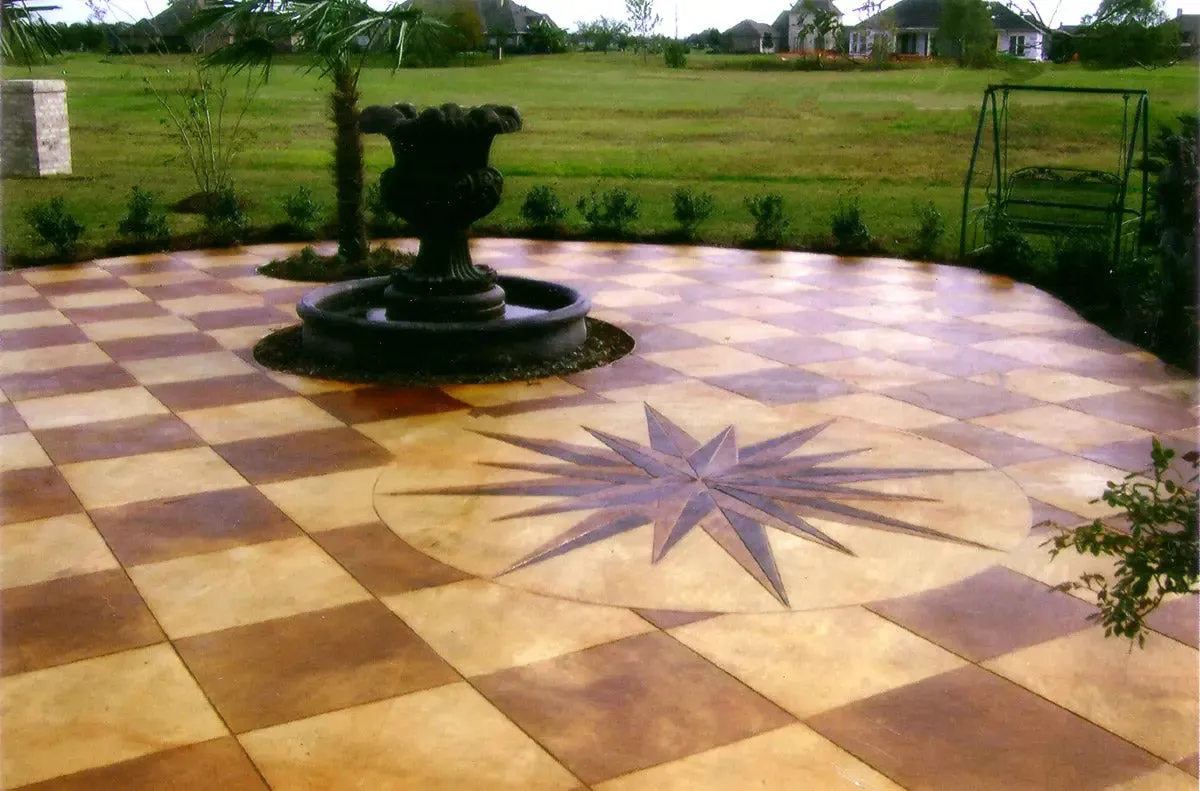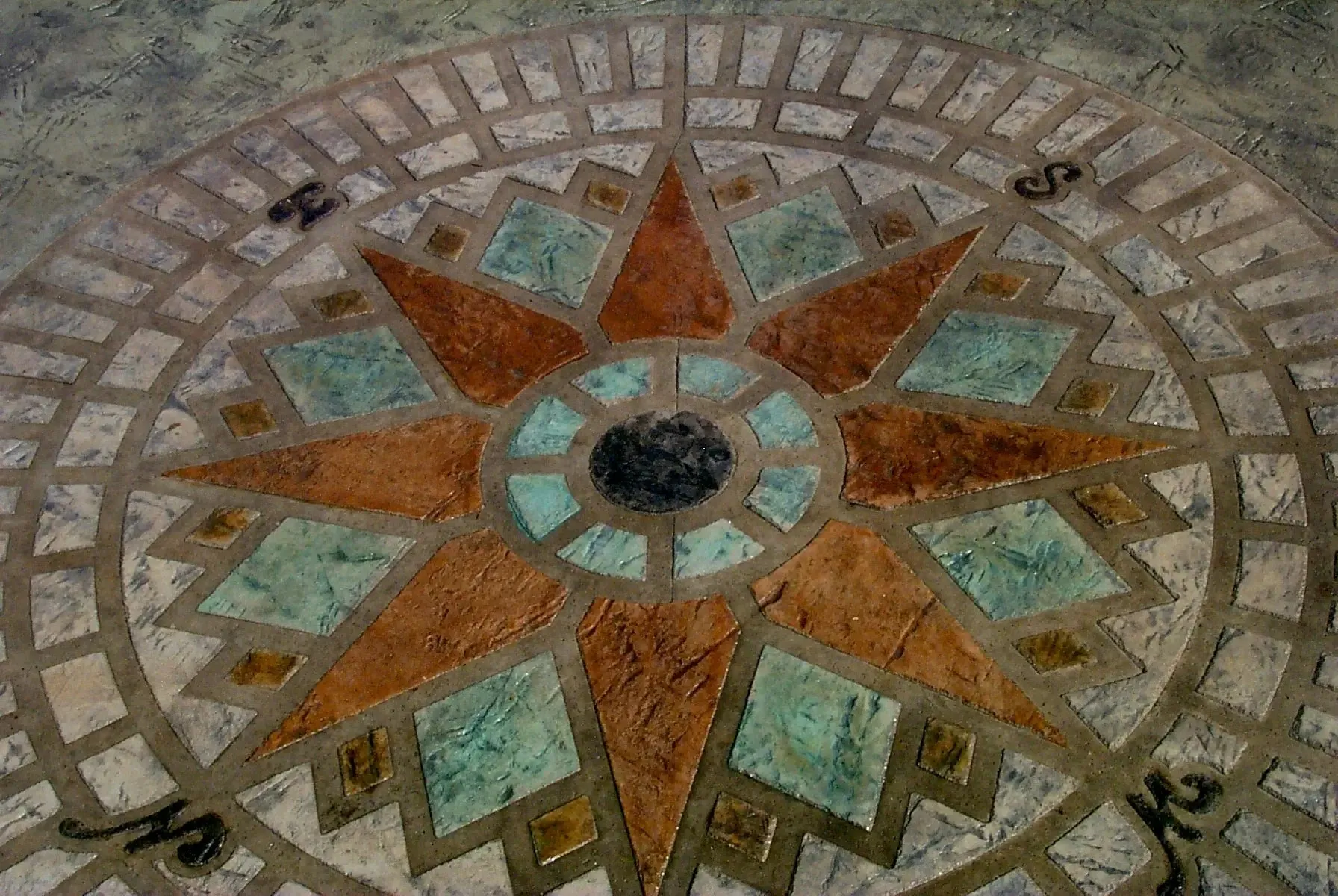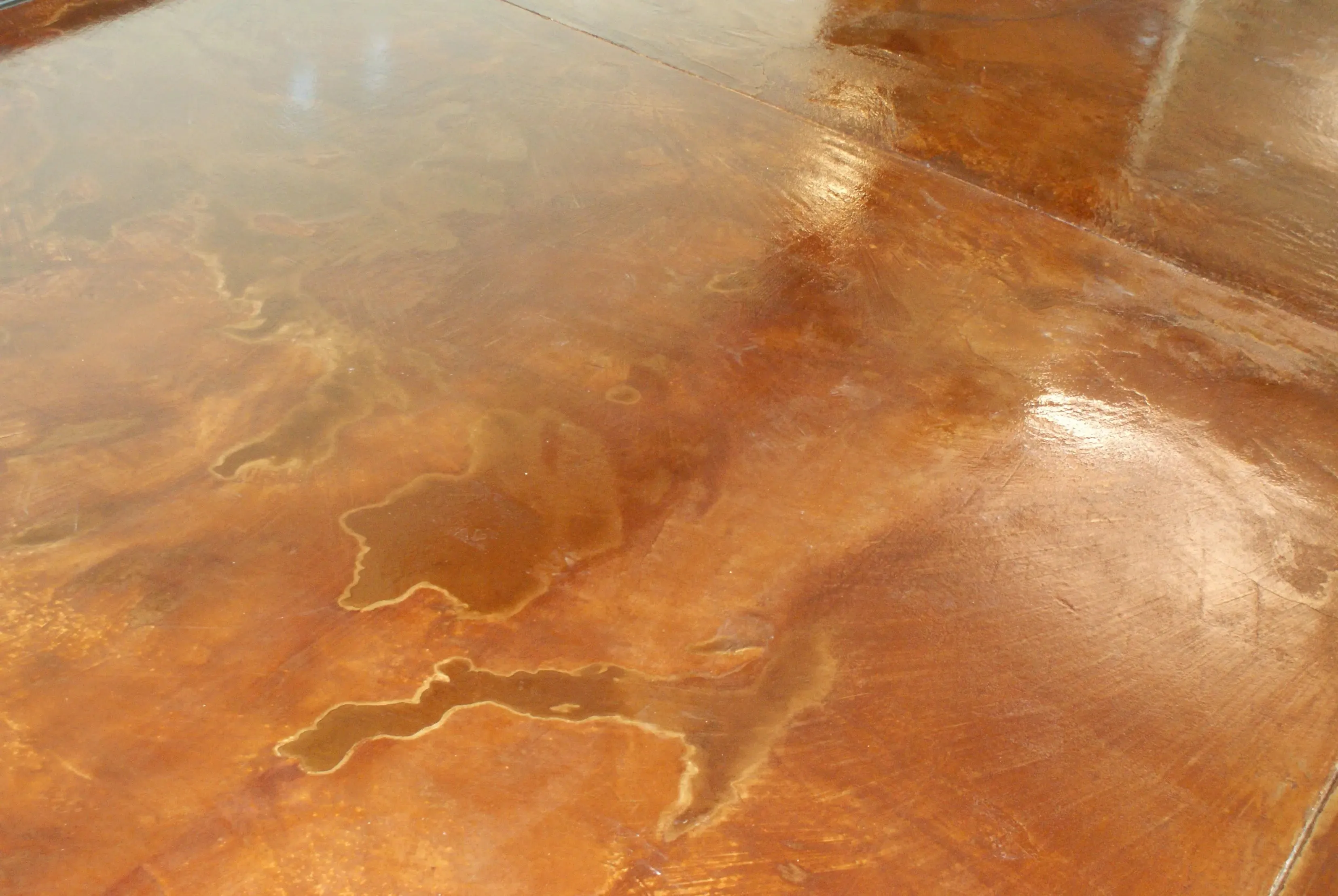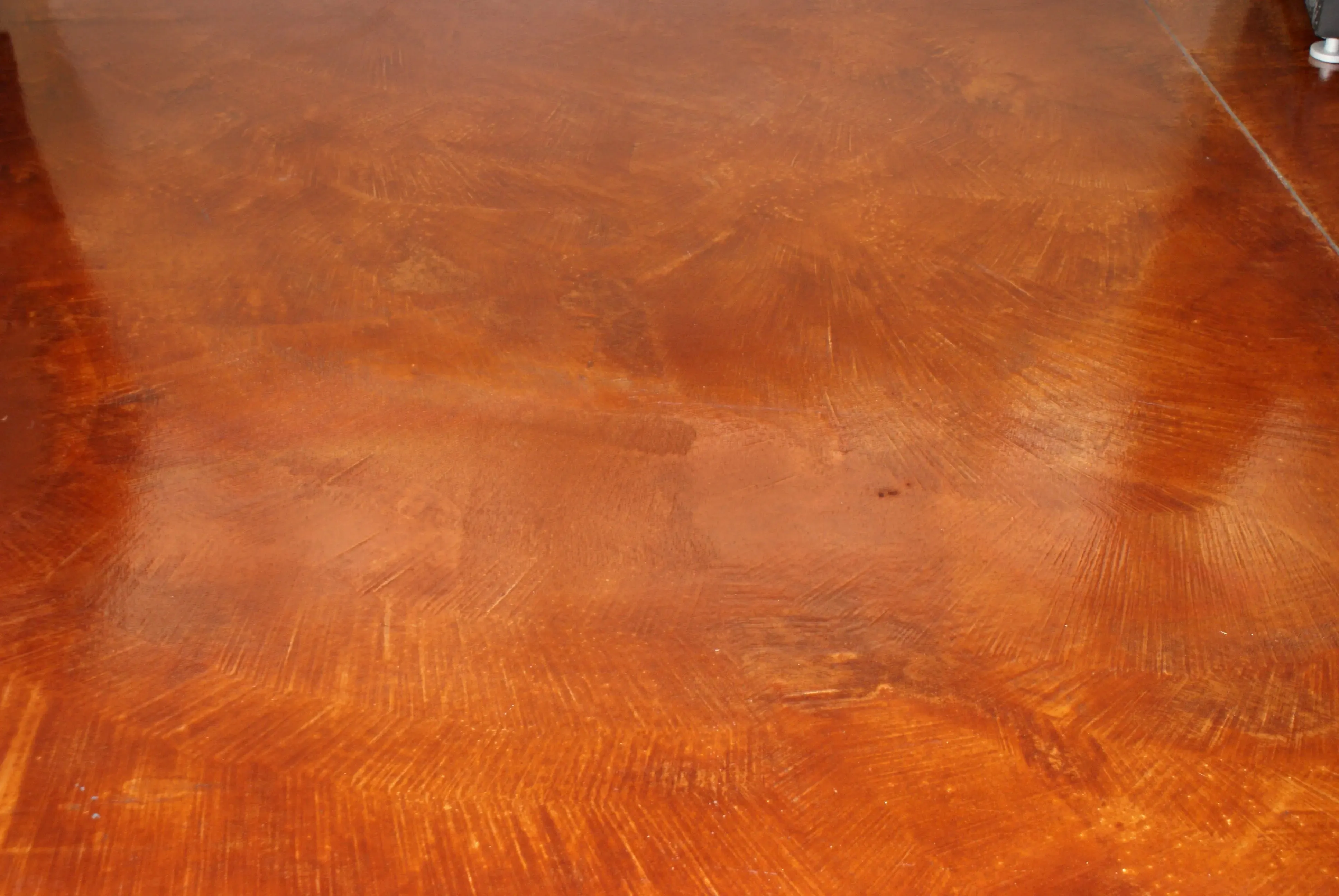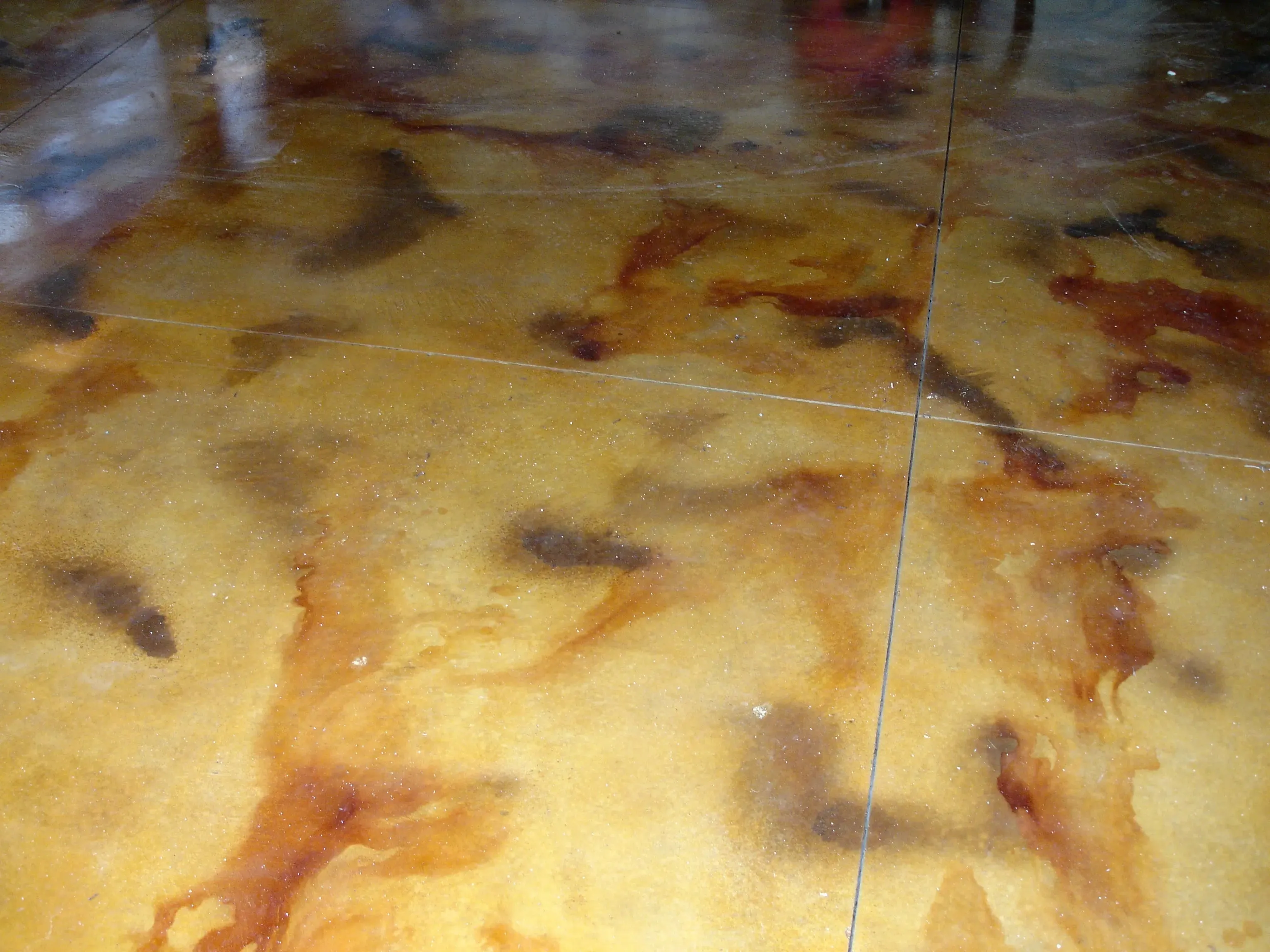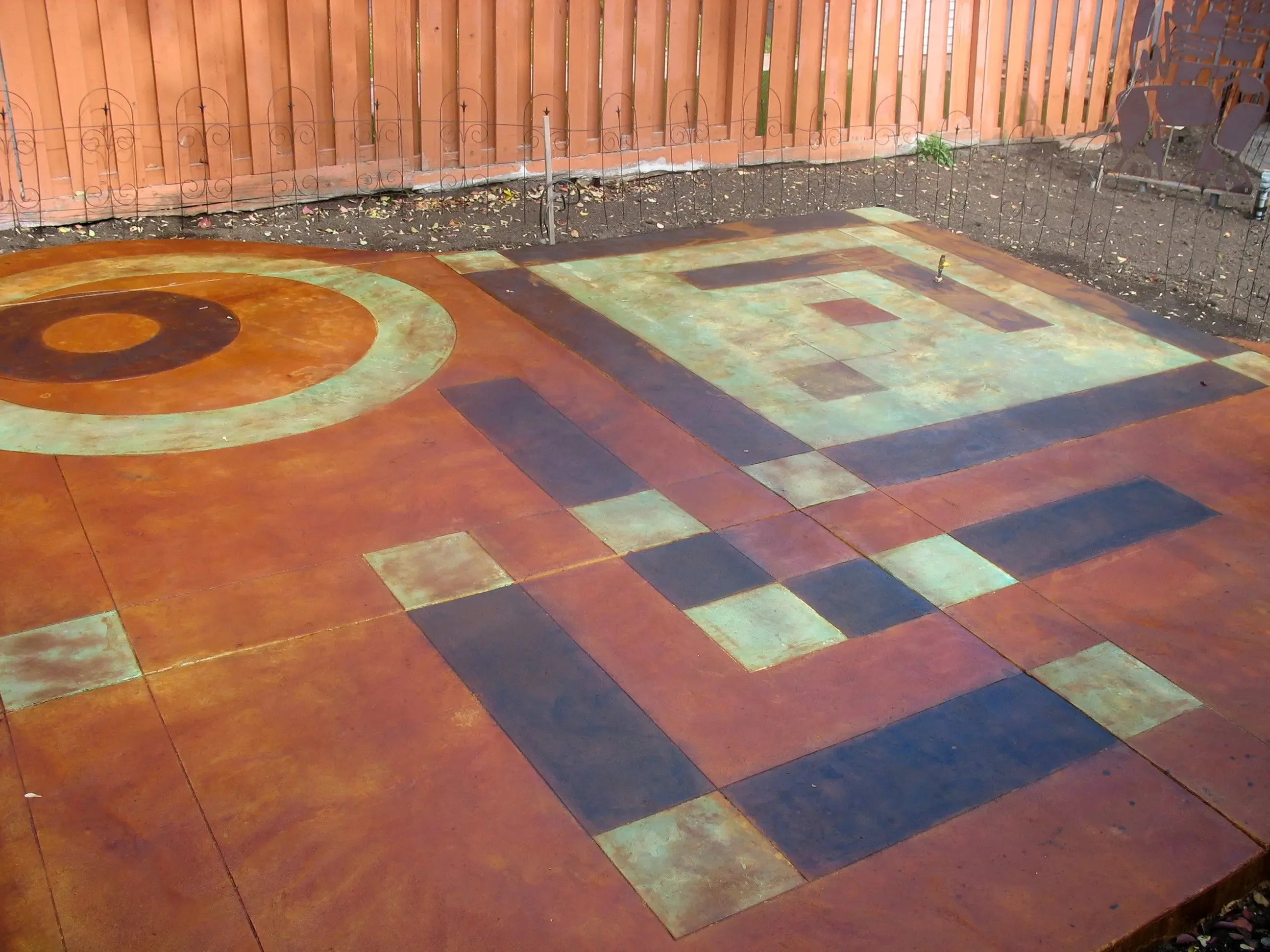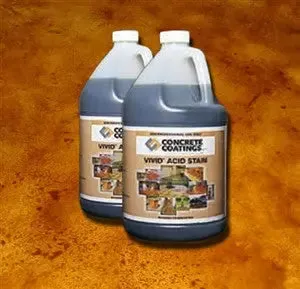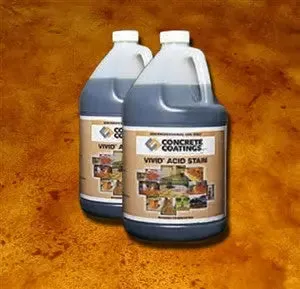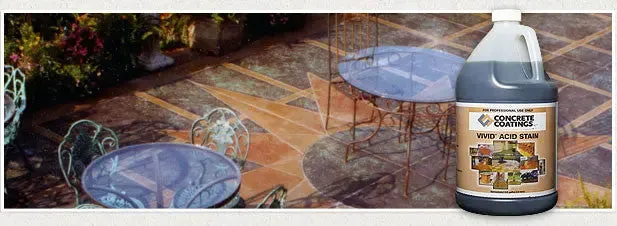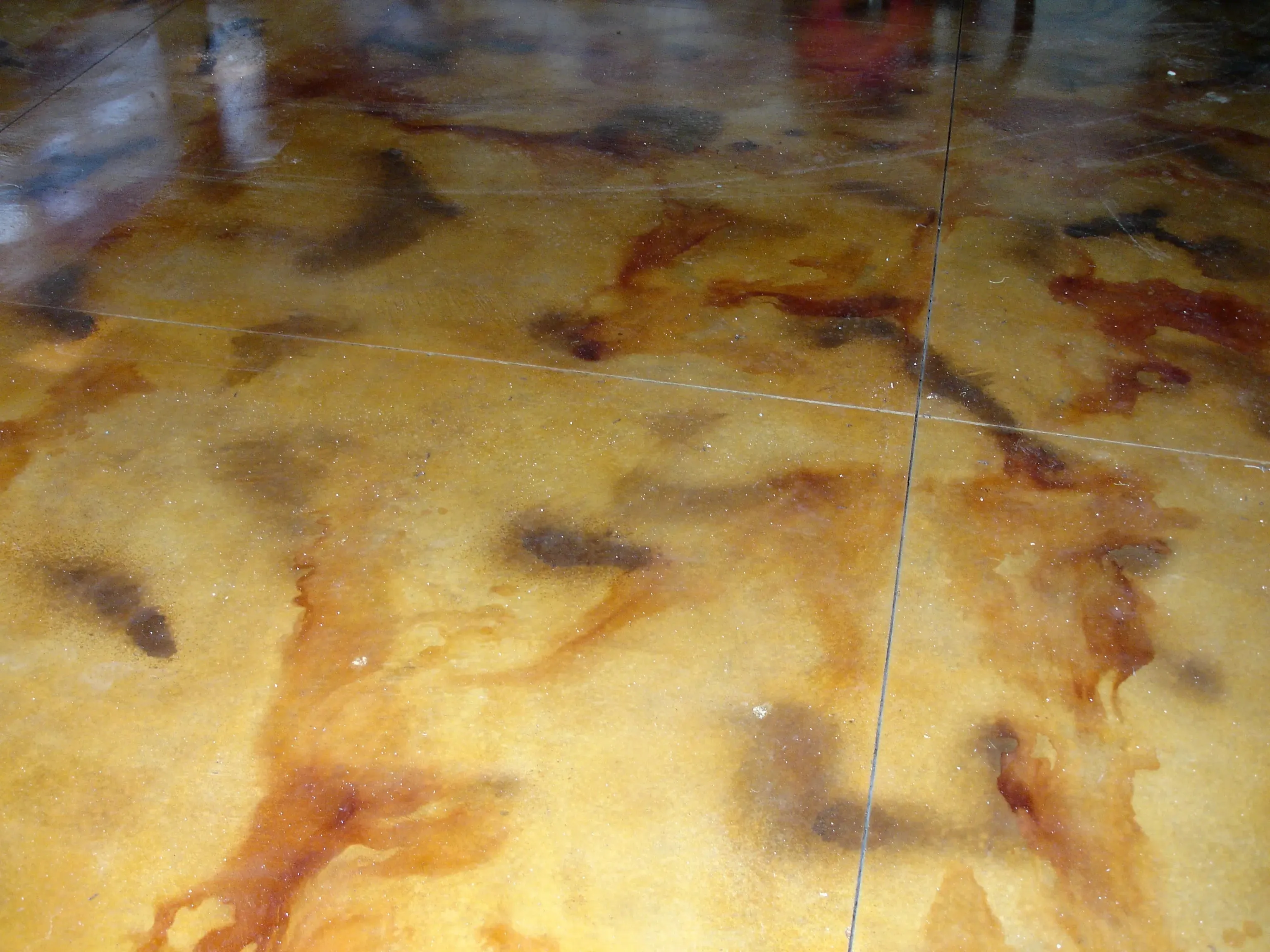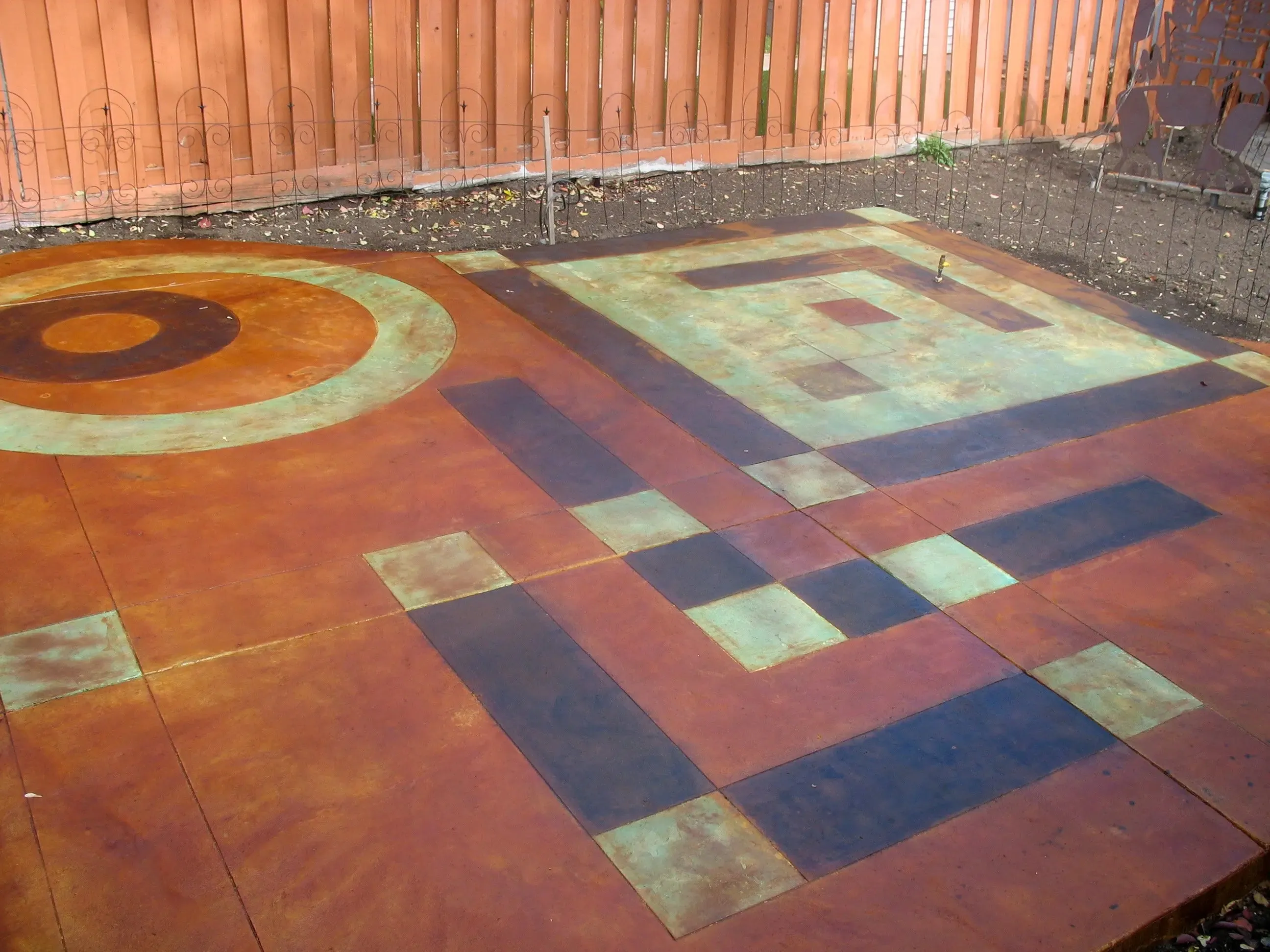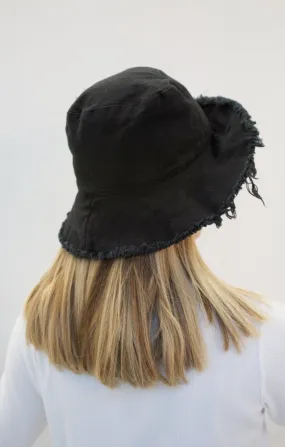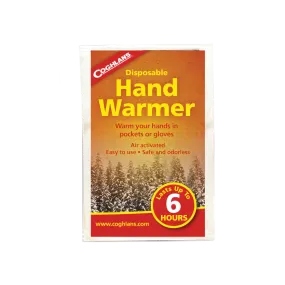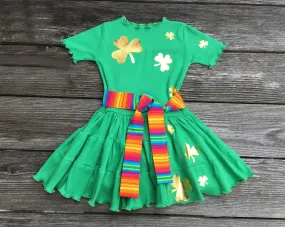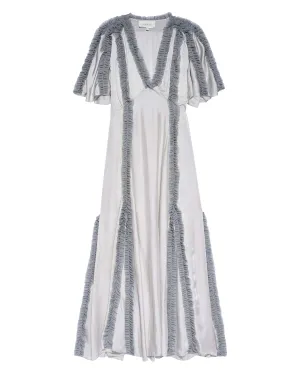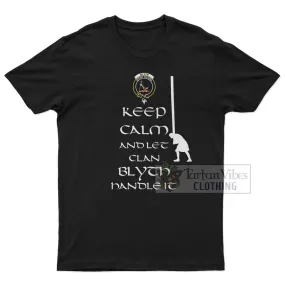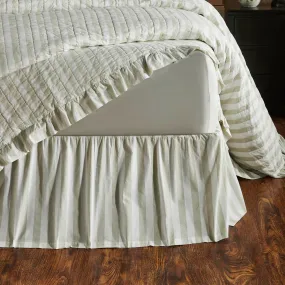PLEASE NOTE: WE HAVE A NEW LINE OF CONCRETE . HOWEVER, WE STILL HAVE SOME REMAINING INVENTORY OF THIS VIVID ACID STAIN IN GALLON (AT A DISCOUNTED PRICE) AND 4oz SAMPLE SIZES, SO YOU MAY STILL PURCHASE THIS PRODUCT, WHILE SUPPLIES LAST! UPON REQUEST WE CAN STILL ORDER IN GALLONS OF THIS STAIN BRAND, PLEASE CONTACT US IF REQUIRED.
Concrete Acid Stain - Concrete Coatings VIVID
- Acid Stained color will not chip, fade, or peel. It actually changes the coloring of the cement surface.
- Our Acid Stain leaves little residue, making it much easier to work with and clean up than most acid stains on the market.
- Acid stains create the most unique, striking color to concrete surfaces.
- Acid staining is one of the most explosive market trends in today's concrete industry.
- Turn an ordinary concrete basement into a beautiful showroom.
- Create beautiful marbled effects on concrete countertops, floors, or slabs.
- Acid stains can be applied in so many ways, with so many effects, you are only limited by your creative ability.
- About Acid Stain colors: Ebony- Almost Black. Walnut- Rich Black with Brown Undertone. Mahogany- Deep Rust, Terracotta. Coffee- Medium Brown with a Slight Red Hue. Mission Brown- Rich, Medium Rusty Brown. Weathered Terracotta- Red/Orange Terracotta. Caramel- Light, Yellowish Brown. Amber- Slightly more Orange than Caramel. Olive- Mossy Green. Jade- Deep Green. Turquoise- Lighter Green.
Specifications Concrete Acid Stain - Concrete Coatings VIVID:
- Sold in 1 Gallon and 4oz sample sizes
- Coverage:
- Approximately 200-300 sq. ft. per gallon, per coat
- Approximately 8 sq. ft. per 4oz sample, per coat
- NOTE- To achieve colors similar to the color charts shown, 2 coats of stain are usually required.
- Variations in finished color may occur due to difference in concrete mix, sand, aggregates, cement color, and water-cement ratio.
- (Technical Data Sheet).
- (Safety Data Sheet).
- (With Color Chart)
- Ships via UPS/FedEx Ground only. No air shipping available (please don't select it at check-out).
Application Concrete Acid Stain - Concrete Coatings VIVID:
- Please note that colors shown are a representation of what the final color will look like. Actual color will rely heavily on skill, practice and experimentation. Application methods and age of concrete will affect the color tones and hues.
- A key factor to successful acid staining is a very clean surface. For best results on floors that are not brand new, un-soiled slabs, the surface should be scrubbed with a low suds cleaner and water using a powered floor buffing machine.
- DO NOT use muriatic or hydrochloric acid to 'clean' the surface before staining. This practice is a myth, and will lessen the actual reaction of the acid stain color if you do so.
- Acid stains can be applied in unlimited ways. Each method has unique characteristics and appearance.
- Basic application: Spray or mist the acid stain onto the concrete using a specially designed sprayer for acid, . DO NOT use a sprayer with metal parts when spraying acid, as they will corrode. Immediately brush the surface with a stiff bristle brush or broom. When finished, rinse the sprayer with clean water to remove any acid residue.
- Alternative applications: Blot acid stain onto concrete using sponges, brushes, or even crumpled plastic or paper bags. There is no limit to the ways stains can be applied.
- Acid stain should be left on the concrete surface 2-4 hours before either applying another coat, or rinsing.
- Apply second and third coats (if desired) right over the existing coat to deepen the color and patina.
- Rinse well with clean water, and then neutralize. Improper neutralization and cleaning will result in poor sealer bonding.
- To Neutralize: Use . (You may also neutralize with 2 cups of household ammonia or bleach mixed with 5 gallons of water, and a few squirts of dish soap). Scrub the concrete using this mixture, using a broom/scrub brush, and mop.
- Clean up the residue with a wet vacuum, mop or sponge. Thoroughly rinse concrete when done, and allow to dry 1 to 2 days before sealing. (For outdoors, most will want to use an Acrylic Solvent Based Sealer such as SuperSeal. For indoors, a polyurethane coating such as DK-400).

